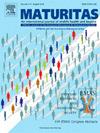与围绝经期妇女情绪和焦虑症相关的保护性和有害的社会和心理因素:叙述性综述
IF 3.6
2区 医学
Q2 GERIATRICS & GERONTOLOGY
引用次数: 0
摘要
围绝经期通常被称为情绪和焦虑症的易发期或加重期。有证据表明,社会和心理因素是导致围绝经期出现情绪和焦虑障碍或抑郁和焦虑症状的原因。因此,本叙事性综述的目的是综述有关社会和心理因素与围绝经期情绪和焦虑症的发生以及抑郁和焦虑症状之间关系的研究结果。我们在 PsychINFO、Ovid MEDLINE 和 CINAHL 中检索了评估与围绝经期情绪和焦虑障碍以及抑郁和焦虑症状相关的社会和心理因素的研究(发表于 2014 年 1 月至 2023 年 11 月)。这些因素被分为保护性因素和有害因素。研究质量根据 STROBE 指南进行评估。搜索结果显示有 17 项研究。社会支持被认为是围绝经期抑郁和焦虑的保护性社会因素。据报道,复原力特征是与较少抑郁症状相关的保护性心理因素。心理健康史、重度抑郁症家族史、特质焦虑和神经质、生活压力事件、不良童年事件和慢性压力被归类为与围绝经期抑郁相关的有害心理因素。有关围绝经期焦虑症相关因素的研究十分有限。确定这些与围绝经期情绪和焦虑症相关的社会和心理因素,将有助于及早发现高危妇女,并制定多方面的干预措施。本文章由计算机程序翻译,如有差异,请以英文原文为准。
Protective and harmful social and psychological factors associated with mood and anxiety disorders in perimenopausal women: A narrative review
Perimenopause is often called a window of vulnerability for the development or exacerbation of mood and anxiety disorders. Evidence points to social and psychological factors contributing to the onset of mood and anxiety disorders or the symptoms of depression and anxiety during perimenopause. Therefore, the purpose of this narrative review was to synthesize the findings of studies examining associations between social and psychological factors and the development of mood and anxiety disorders and the symptoms of depression and anxiety during perimenopause. PsychINFO, Ovid MEDLINE, and CINAHL were searched for studies (published between January 2014 and November 2023) assessing the social and psychological factors associated with perimenopausal mood and anxiety disorders and the symptoms of depression and anxiety. These factors were categorized as either protective or harmful. Study quality was assessed using STROBE guidelines. The search yielded 17 studies. Social support was identified as a social factor protective against perimenopausal depression and anxiety. Resiliency characteristics were reported to be protective psychological factors associated with fewer depressive symptoms. Mental health history, family history of major depressive disorder, trait anxiety and neuroticism, stressful life events, adverse childhood events, and chronic stress were categorized as harmful psychological factors associated with depression during perimenopause. Limited research has been conducted to understand factors associated with perimenopausal anxiety. The identification of these social and psychological factors associated with mood and anxiety disorders during perimenopause will help lead to earlier detection of women at risk and the development of multifaceted interventions.
求助全文
通过发布文献求助,成功后即可免费获取论文全文。
去求助
来源期刊

Maturitas
医学-妇产科学
CiteScore
9.10
自引率
2.00%
发文量
142
审稿时长
40 days
期刊介绍:
Maturitas is an international multidisciplinary peer reviewed scientific journal of midlife health and beyond publishing original research, reviews, consensus statements and guidelines, and mini-reviews. The journal provides a forum for all aspects of postreproductive health in both genders ranging from basic science to health and social care.
Topic areas include:• Aging• Alternative and Complementary medicines• Arthritis and Bone Health• Cancer• Cardiovascular Health• Cognitive and Physical Functioning• Epidemiology, health and social care• Gynecology/ Reproductive Endocrinology• Nutrition/ Obesity Diabetes/ Metabolic Syndrome• Menopause, Ovarian Aging• Mental Health• Pharmacology• Sexuality• Quality of Life
 求助内容:
求助内容: 应助结果提醒方式:
应助结果提醒方式:


